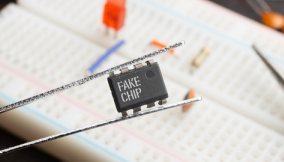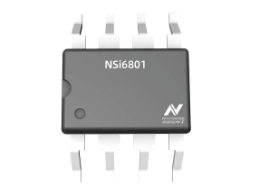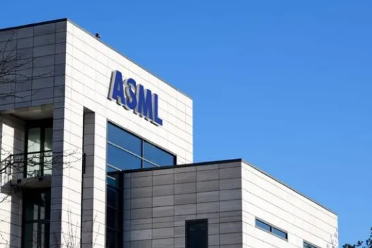AMEYA360:Networking a Smart City: Using Fit-for-Purpose Tech
Multiple market forecasts project smart cities will grow at a compounded annual growth rate of as much as 25% between now and 2030, making cities a very attractive market for internet of things (IoT) solution providers. However, cities present various unique challenges for vendors seeking to enter this market.

Cities are highly complex deployments for any technology, and IoT networking is no exception. Let’s examine the challenges to understand why selecting a networking technology designed to meet a city’s needs is vital.
Diagram of a smart city, where LoRaWAN is essential for networking.
First, there are very real physical challenges to deploying networks in cities. Cities are largely built with steel and concrete, which creates connectivity issues as wireless signals often struggle to penetrate these materials. Further, many IoT sensors reside in basements or underground, which also presents a challenge for achieving reliable connections. So, it is important to select a networking technology with a track record of success in urban environments, like LoRaWAN (LoRa stands for Long Range).
LoRaWAN is proven to transmit signals through cement, metal and underground. The recent addition of battery-operated relays provides an easy-to-deploy, low-power and standards-based approach to extend LoRaWAN coverage beyond its current physical limits at a fraction of the cost of adding additional gateways.
Second, the vast majority of IoT applications transmit tiny amounts of data, making low-bandwidth networking desirable because it meets the connectivity and scaling requirements at a fraction of the cost of high-bandwidth technologies. With LoRaWAN, a single gateway supports thousands of sensors and costs only hundreds of dollars, making it highly cost effective to expand the system as new applications are added to the network. This scalability is a critical benefit for cities that want to be sure their networking choice will continue to be optimal even with future urban development and growth.
Third, it is crucial to consider the power consumption of the devices. Maintenance and ongoing operation are key drivers of cost that must be considered when making a networking decision. Using end devices with low-power consumption extends battery life to more than 10 years, saving time, money and our environment.
It is important to note that there will be millions of devices operating in hard-to-reach places, or buried underground, so longer battery life also saves significant time and labor costs. This allows LoRaWAN to deliver considerable cost savings over a device’s lifetime, which increases environmental and energy sustainability in turn.
Fourth, having flexible business models future proofs a networking solution because a city’s needs will evolve over time. LoRaWAN addresses this by offering the most network flexibility of any LPWAN, allowing it to meet the needs of all departments, which each have their own unique requirements. A city can build a private network, subscribe to a public or satellite one, join a community network, or utilize a hybrid. Finally, a city also has the ability to roam across these various types of deployment options.
Fifth, because cities are governmental entities, there are many rules, regulations and requirements to consider. Open standards are the only viable choice when investing in long-term solutions because they enable longevity and are backed by dynamic ecosystems that foster competition and give cities a choice in terms of vendors and pricing. Proprietary solutions are problematic because they lock cities into a single vendor, which restricts the quantity and types of available products and may include price lock-ins.
These are serious drawbacks that risk not meeting all a city’s long-term needs. Further, cities should insist on using end devices that are certified by a regulatory body. Certification is the only way to have confidence that devices will be reliable and compliant with the standards, thus reducing potential support costs and ensuring interoperability. LoRaWAN meets these requirements, having been officially approved as a standard by the International Telecommunications Union (ITU). Additionally, the technology is backed by the LoRa Alliance Certification Program.
Because cities that want to become smart must anticipate future needs and consider current challenges, open standards like LoRaWAN are ideal because they bring reliability, flexibility and ecosystems that offer a wide variety of choices. These features allow cities to find strong partners who are willing to innovate and collaborate to solve the city’s challenges. Combine the use of open standards with a requirement to deploy certified end devices, and cities’ IoT connectivity selections will offer a return on investment for years to come.
在线留言询价

AMEYA360:Avnet Fiscal Q3 Sales Up 0.4%
- 一周热料
- 紧缺物料秒杀
| 型号 | 品牌 | 询价 |
|---|---|---|
| RB751G-40T2R | ROHM Semiconductor | |
| CDZVT2R20B | ROHM Semiconductor | |
| MC33074DR2G | onsemi | |
| TL431ACLPR | Texas Instruments | |
| BD71847AMWV-E2 | ROHM Semiconductor |
| 型号 | 品牌 | 抢购 |
|---|---|---|
| ESR03EZPJ151 | ROHM Semiconductor | |
| BP3621 | ROHM Semiconductor | |
| BU33JA2MNVX-CTL | ROHM Semiconductor | |
| STM32F429IGT6 | STMicroelectronics | |
| IPZ40N04S5L4R8ATMA1 | Infineon Technologies | |
| TPS63050YFFR | Texas Instruments |
- 周排行榜
- 月排行榜
AMEYA360公众号二维码
识别二维码,即可关注

























